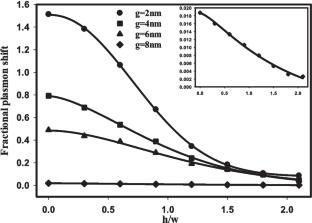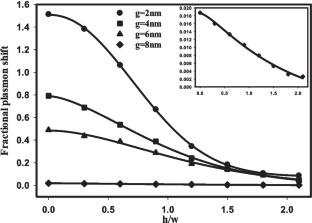Optical Properties of Non-Aligned Metallic Heterogeneous Dimer Systems
Abstract
The optical properties of a non-aligned Ag-Au nanorod dimer arranged in the end-to-end configuration are calculated by employing the Finite-Difference Time-Domain (FDTD) analytical tool under illumination of a longitudinally polarized light. The spectral responses of the heterodimer are computed at different gap spacings (g) and various transverse shifts (h). From the results of the simulations, it is found that the plasmon mode excited in Au exhibits more sensitivity to any change in either g or h than the Ag mode. The calculated fractional plasmon shift of the Au mode decays with h scaled to the rod width (h/w), and it follows a logistic function trend. Furthermore, the fraction plasmon shift is investigated as a function of g in units of the rod width (g/w) at various values of h, and it is found that it decays exponentially with gap separation but unexpectedly with a variant decay constant that strongly depends on h. These findings contradict the invariant decay constant of 0.2 predicted by the universal scaling behavior in homodimer systems. The current findings provide comprehensive guidelines for the theoretical prediction of the spectral response of non-aligned heterogeneous dime systems.



 求助内容:
求助内容: 应助结果提醒方式:
应助结果提醒方式:


